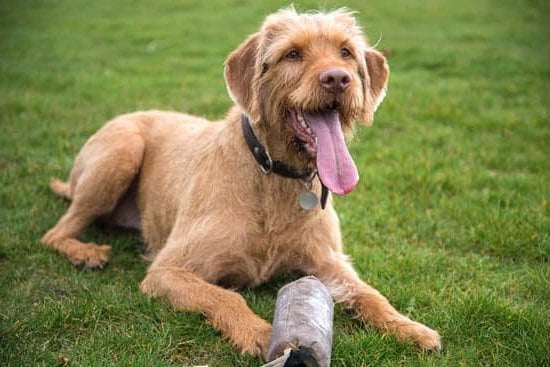Are you tired of your dog dragging you on walks? In this article, we will explore how to train dogs not to pull and make your walks more enjoyable for both you and your furry friend. Understanding the root of the problem is crucial in tackling this behavior. The importance of training dogs not to pull cannot be overstated, as it contributes to their safety and well-being while also fostering a positive relationship between you and your pet.
One of the key aspects of training dogs not to pull is understanding why they engage in this behavior in the first place. By delving into the reasons behind their pulling tendencies, we can effectively address the issue with appropriate training techniques. It is essential to develop a thorough understanding of canine psychology and behavior in order to guide them towards proper leash walking etiquette.
Basic training techniques utilizing positive reinforcement play a pivotal role in teaching dogs not to pull on leashes. Through consistent encouragement and rewards, we can instill desirable behaviors in our pets.
Moreover, introducing proper leash walking equipment, along with practical exercises for teaching loose leash walking, are fundamental steps towards achieving success in training our dogs. Remember that consistency is key when establishing a training routine – one that will lead us towards enjoying stress-free walks with our well-trained companions.
The Importance of Training Dogs Not to Pull
Training dogs not to pull on the leash is essential for both the well-being of the dog and the owner’s enjoyment during walks. When a dog pulls on the leash, it can lead to health issues such as neck strain or damage, especially in smaller breeds. Furthermore, pulling can make walking a stressful and unpleasant experience for owners, potentially leading to less frequent walks and reduced exercise for the dog.
Moreover, teaching a dog not to pull creates a stronger bond between the owner and their pet. Through consistent training and positive reinforcement, dogs learn to pay attention to their owner’s cues during walks, leading to a more harmonious relationship overall. Additionally, a dog that has been trained not to pull will be seen as well-behaved and under control by others when out in public.
Overall, training your dog not to pull is about promoting their physical well-being, enhancing the bond between you and your pet, and ensuring an enjoyable experience for both during walks. This foundation of training lays the groundwork for other aspects of obedience training as well. In essence, this fundamental skill contributes significantly to a well-rounded and disciplined canine companion.
| Importance | Benefits |
|---|---|
| Promotes physical well-being | Healthier walking experiences |
| Enhances bond between dog and owner | Stronger relationship overall |
| Ensures enjoyable experience for both | Contributes to a disciplined canine companion |
Basic Training Techniques
Training a dog not to pull on the leash is an essential skill for both the dog and the owner. This section will focus on basic training techniques using positive reinforcement, which have proven to be effective in teaching dogs to walk nicely on a leash.
Understanding Positive Reinforcement
Positive reinforcement involves rewarding desired behaviors with treats, praise, or toys. When a dog exhibits the desired behavior, such as walking without pulling, they receive a reward. This method helps the dog associate walking without pulling with positive experiences, making them more likely to repeat that behavior.
Using Treats and Praise
When starting leash training, it’s important to have plenty of small, soft treats handy that your dog enjoys. As you begin your walk, keep the treats in your pocket and occasionally give your dog a treat when they are walking calmly without pulling. Additionally, using verbal praise along with the treat will reinforce the positive behavior.
Consistency in Training
Consistency is key when using positive reinforcement for training purposes. It’s essential to consistently reward your dog for walking nicely on the leash and withholding rewards when they pull. Over time, this will help them understand what is expected of them and encourage them to walk without pulling.
By implementing these basic training techniques using positive reinforcement, dog owners can effectively teach their furry companions to walk politely on a leash without pulling. It’s important to remember that each dog learns at their own pace, so patience and consistency are crucial throughout the training process.
Introducing Proper Leash Walking Equipment
Understanding the Importance of the Right Equipment
When it comes to training dogs not to pull on their leash, having the right equipment is crucial. Traditional collars or choke chains can actually exacerbate pulling behavior and cause discomfort for your pet. Instead, consider using a front-clip harness or head halter, which can help redirect your dog’s attention and discourage pulling. These types of equipment are designed to gently guide your dog back towards you when they pull, rather than causing any harm or discomfort.
Choosing the Right Leash
In addition to using proper harnesses, it’s important to use the right type of leash when training your dog. A standard 6-foot leash is recommended for most training exercises, as it allows you to maintain control while still giving your dog enough freedom to move around. Avoid using retractable leashes during training sessions, as they can reinforce pulling behavior by allowing your dog to wander too far ahead.
Gradual Introduction and Positive Association
When introducing new equipment to your dog, it’s important to do so gradually and in a positive manner. Allow your dog to sniff and investigate the harness or head halter before putting it on them. Once they are comfortable with the equipment, associate it with positive experiences such as treats or playtime. This will help create a positive association with the gear and make the training process more enjoyable for your pet.
By investing in the right leash walking equipment and taking the time to introduce it properly, you can set the stage for successful leash training with your dog. Remember that patience and consistency are key components of effective training, so take the time to find what works best for both you and your furry companion.
Practical Exercises for Teaching Loose Leash Walking
Once you have introduced your dog to the concept of loose leash walking and they understand what is expected of them, it’s time to start practicing this behavior. One effective exercise is the “red light, green light” method. With your dog on a leash, take a step forward and if they start pulling, stop immediately. Stand still until they stop pulling and give them the “green light” to continue walking by moving forward again.
Another useful exercise is the “change of direction” method. While walking with your dog on a leash, abruptly change direction whenever they start pulling. This will teach them to pay attention to your movements and stay close by without tension on the leash. Gradually increase the distance covered before each direction change as your dog gets better at following your lead.
One more practical exercise involves using treats or rewards to reinforce good behavior. When your dog walks beside you without pulling, reward them with a treat or verbal praise. This positive reinforcement will encourage them to continue walking calmly by your side. It’s important to be consistent with these exercises and always end each training session on a positive note.
| Exercise | Effectiveness |
|---|---|
| “Red Light, Green Light” Method | Effective for teaching dogs to stop pulling when instructed |
| “Change of Direction” Method | Helps dogs learn to pay attention and follow their owner’s lead |
| Treat-Based Reinforcement | Encourages dogs to maintain loose leash walking through positive association |
Addressing Behavioral Challenges
When your dog continues to pull on the leash despite training efforts, it can be frustrating and discouraging. However, it’s important to understand that addressing behavioral challenges is part of the training process. Here are some practical steps you can take when your dog continues to pull on the leash:
1. Identify Triggers and Distractions: Pay attention to what triggers your dog’s pulling behavior. Is it other dogs, squirrels, or simply excitement to go for a walk? By identifying these triggers, you can work on desensitizing your dog to them through positive reinforcement techniques.
2. Implementing Redirection Techniques: When your dog starts to pull on the leash, use redirection techniques such as changing direction or stopping completely until your dog relaxes and walks beside you. This helps your dog understand that pulling will not get them where they want to go.
3. Seek Professional Help if Necessary: If your dog’s pulling behavior persists despite consistent training efforts, consider seeking help from a professional dog trainer or behaviorist. They can provide personalized guidance and strategies tailored to your dog’s specific needs.
By addressing behavioral challenges with patience and consistency, you can effectively teach your dog not to pull on the leash and enjoy stress-free walks together. Remember that every dog is unique, so be open to adjusting your training techniques based on what works best for your furry companion.
Consistency Is Key
Establishing a consistent training routine is crucial when teaching dogs not to pull on leashes. Dogs thrive on routine, and having set training sessions can help them understand what is expected of them. Consistency means practicing the same techniques and using the same commands every time you train your dog. This repetition helps reinforce the desired behavior and makes it easier for your dog to understand what you want from them.
When establishing a training routine, consider your dog’s energy levels and schedule training sessions at times when they are more likely to be focused and attentive. It’s also important to be consistent in your own behavior. Use the same tone of voice and body language during training sessions, as any inconsistency can confuse your dog and hinder their progress.
In addition to regular training sessions, consistency also means being persistent with corrections and rewards during walks. If your dog starts pulling on the leash, use consistent cues such as “heel” or “easy” to remind them of the desired behavior. Likewise, consistently reward them with treats, praise, or toys when they walk calmly by your side. Over time, this consistency will help reinforce the habit of walking without pulling on the leash.
The Benefits of a Well-Trained Dog
Now that you have successfully trained your dog not to pull on the leash, it’s time to reap the rewards of your hard work. Enjoying stress-free walks with your well-trained dog can benefit both you and your furry companion in several ways. Here are some of the benefits of having a well-trained dog when it comes to leash walking:
- Improved Bonding: Walking calmly beside each other can strengthen the bond between you and your dog, leading to a more trusting and harmonious relationship.
- Safety and Control: With proper leash training, you can have better control over your dog during walks, reducing the risk of accidents or runaway situations.
- Enhanced Social Interaction: Walking a well-behaved dog can make outdoor activities more enjoyable, as it allows for positive interactions with other people and their pets.
In order to maintain the benefits of a well-trained dog, consistency is key. By continuing to reinforce good behavior during walks, you can ensure that your furry friend remains a joy to walk with. Keep practicing the techniques you’ve learned and continue using positive reinforcement to encourage proper leash walking.
Lastly, remember that enjoying stress-free walks together is not only beneficial for you but also for your dog’s physical and mental well-being. Regular walks provide exercise, mental stimulation, and opportunities for exploration, all contributing to a healthier and happier pet. By consistently applying what you’ve learned in training, both you and your dog can continue to enjoy enriching experiences during your outings.
Advanced Training Techniques for Dogs Prone to Heavier Pulling
Many dogs, especially larger breeds, have a natural inclination to pull on their leashes. This can be frustrating for dog owners and make walks stressful for both the owner and the dog. However, with advanced training techniques, it is possible to curb this behavior and teach your dog to walk calmly on a leash.
One effective technique for training dogs prone to heavier pulling is using a front-clip harness. This type of harness is designed to discourage pulling by redirecting the dog’s attention back towards the owner when they try to pull forward. By attaching the leash at the front of the harness, it becomes more difficult for the dog to exert their full weight and strength while walking, making it easier for the owner to guide them.
Another advanced training technique for dogs prone to heavy pulling is teaching them how to heel. Heeling involves having your dog walk closely beside you with their shoulder even with your leg. This position teaches your dog self-control and reinforces your role as the leader during walks. Teaching your dog to heel may require extra patience and practice, but it can be a highly effective way to reduce pulling behavior.
Finally, utilizing distractions and rewards during walks can be an advanced technique that helps deter pulling behavior. For example, if your dog starts to pull on their leash, you can use verbal cues or treats to redirect their focus back towards you.
By providing positive reinforcement when your dog walks without pulling and using distractions like toys or commands, you can help them learn appropriate leash manners even in distracting environments. With consistency and patience, these advanced training techniques can help transform your daily walks into enjoyable experiences for both you and your furry friend.
Troubleshooting Common Issues
In conclusion, training dogs not to pull on their leash is an important aspect of responsible pet ownership. Understanding the root of the problem, which often lies in the dog’s natural instincts and lack of training, is crucial in addressing this issue. By using positive reinforcement techniques and introducing proper leash walking equipment, pet owners can effectively teach their dogs to walk calmly by their side.
Consistency is key when it comes to training dogs not to pull on their leash. Establishing a regular training routine and practicing practical exercises for teaching loose leash walking will help reinforce good behavior in your furry companion. Even when faced with behavioral challenges or if your dog continues to pull, patience and perseverance will be necessary to overcome these obstacles.
Ultimately, the benefits of having a well-trained dog extend beyond just enjoyable walks together. A well-behaved dog is a happier dog, and by investing time and effort into training, pet owners can foster a stronger bond with their canine companions.
Additionally, advanced training techniques can be utilized for dogs prone to heavier pulling, while troubleshooting common issues will help address any difficulties that may arise during the training process. With dedication and commitment, pet owners can successfully train their dogs not to pull on their leash and enjoy stress-free walks together.
Frequently Asked Questions
How Do I Stop My Dog From Extremely Pulling?
To stop your dog from extremely pulling, it’s important to provide consistent and positive leash training. Using treats and praise to reward your dog for walking without pulling can be effective. Additionally, using a front-clip harness or head halter can help reduce pulling by giving you more control over your dog’s movements.
What Is the #1 Trick to Stop Your Dog Pulling on the Leash?
The #1 trick to stop your dog from pulling on the leash is to teach them how to walk politely by your side. This can be accomplished by using treats and verbal praise to reinforce good behavior, along with stopping or changing direction when they start pulling.
Consistency and patience are key in helping your dog understand what is expected of them during walks.
How Do You Fix a Dog’s Pulling Behavior?
Fixing a dog’s pulling behavior requires patience, consistency, and positive reinforcement. You can start by teaching your dog basic obedience commands such as “heel” or “leave it” while on the leash.
Additionally, using tools like front-clip harnesses or head halters can make training more effective by giving you better control over their movements. With time and practice, you can help your dog learn to walk calmly on the leash without pulling excessively.

Welcome to the blog! I am a professional dog trainer and have been working with dogs for many years. In this blog, I will be discussing various topics related to dog training, including tips, tricks, and advice. I hope you find this information helpful and informative. Thanks for reading!





